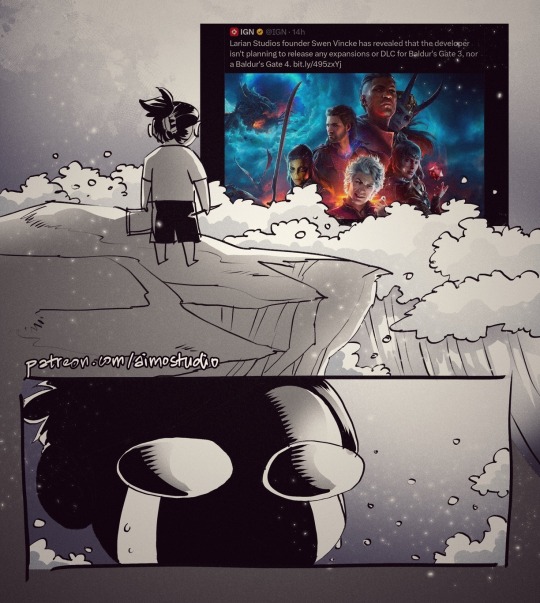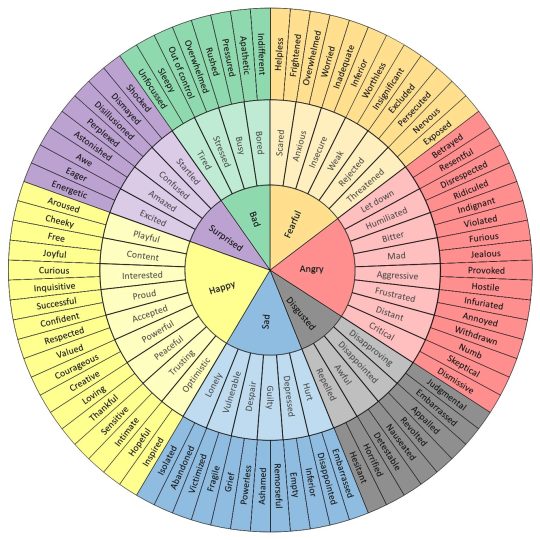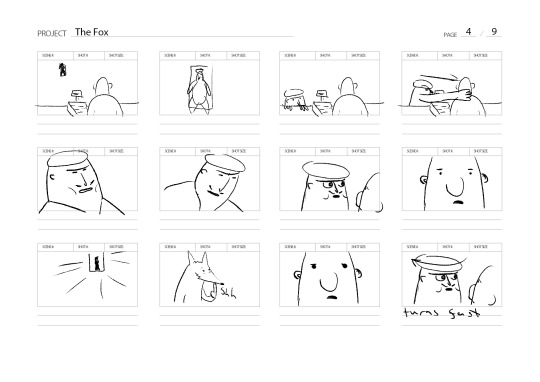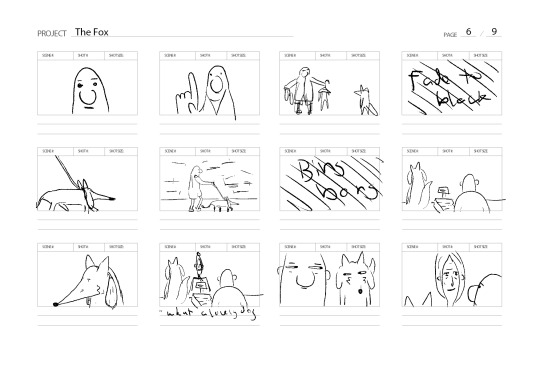#creative development
Text
Experiment with Fit-for-Purpose Archetypes
Recruiting fit-for-purpose archetypes allows you to flex between archetypes to suit those out-of-the-box needs and concerns.
The idea that you can recruit fit-for-purpose archetypes will challenge the idea that you’re stuck with the same 12 archetypes for life.
A fit-for-purpose archetype is one that is recruited to assist you to perform an out-of-the-box function or to fulfil an extra-ordinary purpose. A fit-for-purpose archetype sits outside the capabilities of your core personal archetypes.
Experiment with…

View On WordPress
#360°Archetypes#archetypes#creative development#fit-for-purpose archetypes#growth mindset#personal growth
0 notes
Text
Good Traits Gone Bad
Exploring good traits gone bad in a novel can add depth and complexity to your characters. Here are a few examples of good traits that can take a negative turn:
1. Empathy turning into manipulation: A character with a strong sense of empathy may use it to manipulate others' emotions and gain an advantage.
2. Confidence becoming arrogance: Excessive confidence can lead to arrogance, where a character belittles others and dismisses their opinions.
3. Ambition turning into obsession: A character's ambition can transform into an unhealthy obsession, causing them to prioritize success at any cost, including sacrificing relationships and moral values.
4. Loyalty becoming blind devotion: Initially loyal, a character may become blindly devoted to a cause or person, disregarding their own well-being and critical thinking.
5. Courage turning into recklessness: A character's courage can morph into reckless behavior, endangering themselves and others due to an overestimation of their abilities.
6. Determination becoming stubbornness: Excessive determination can lead to stubbornness, where a character refuses to consider alternative perspectives or change their course of action, even when it's detrimental.
7. Optimism becoming naivety: Unwavering optimism can transform into naivety, causing a character to overlook dangers or be easily deceived.
8. Protectiveness turning into possessiveness: A character's protective nature can evolve into possessiveness, where they become overly controlling and jealous in relationships.
9. Altruism becoming self-neglect: A character's selflessness may lead to neglecting their own needs and well-being, to the point of self-sacrifice and burnout.
10. Honesty becoming brutal bluntness: A character's commitment to honesty can turn into brutal bluntness, hurting others with harsh and tactless remarks.
These examples demonstrate how even admirable traits can have negative consequences when taken to extremes or used improperly. By exploring the complexities of these traits, you can create compelling and multi-dimensional characters in your novel.
Happy writing!
#character traits#writing#writing tips#character development#writer on tumblr#writerscommunity#writer tumblr#writblr#writing advice#oc character#writing help#creative writing
51K notes
·
View notes
Text
The Essence of Culinary Success: Restaurant Branding Agency
Discover the transformative power of a restaurant branding agency. Unlock your eatery's true potential and leave a lasting culinary mark with expert guidance from a renowned restaurant branding agency.

0 notes
Text
Creative Development
We specialize in creative development that brings your brand to life. Our team of creative minds crafts engaging and compelling content, design, and campaigns that resonate with your audience and drive results. Let's unleash the power of creativity for your brand's success.
Explore more: https://growthanchors.com/creative-development/
0 notes
Text
Creative Development - recording audio in the studio.
I went into the London recording studio to record audio with Dante and Wahab (my sound designers)… and to continue the bad luck the equipment we rented to record the audio had not been set properly, We had a 3-hour session and I had created a list of all the sounds we would need. The engineers in the place fixed the issue with the equipment and when everything was set up we had just over an hour to record.
I prioritized sounds that I didn't have and tried to get as much done as possible. While the engineers were working on the hardware I was practicing and developing different sounds which I could use. This made the recording process rapid and despite setbacks, we got a lot of audio recorded by the end of the day. After this, I went back and made another list of the sounds and as we knew we had another day to record the next day also went well but as time was of the essence I directed the sound session over a discord call while working on animation.
The sounds from this session are invaluable as it was a great opportunity to source high-quality and unique sounds for my film, exactly the way I wanted them. I found working with others really fun and despite the stress of time, it made me optimistic about my project.
I wanted the sounds of the film to have a classic cartoonish absurdity, but I also hoped to capture the quiet and awkward British humour aesthetic that I had been working to create in my visuals. I think I struck this balance with a combination of music and pho sound effects but it's hard to say until Dante and Wahab get back to me with the final mix.
I'm incredibly relieved as I can get back to working with sound now.
0 notes
Text
#Political advertising#Obiyan Infotech#Effective political ads#Memorable political ads#Media buying#Creative development#Campaign management#Winning elections
0 notes
Text

BEAST | Video Production Company London, UK
CANNES LIONS Award-Winning Video Production Company from London. Brands we work for include Apple, British Airways, LG, Tommy Hilfiger, and many more.
1 note
·
View note
Text
Want quick tips to add instant chemistry to the relationships of your characters??
(🥳With examples🥳)
First of all, I want to say that you can also use most of them for platonic/ non-romantic relationships, so feel free to use this tips however you think they might work better in your story. So, without further adue, let's get to the tips!!!
Make your characters LISTEN to each other. Like, if A tells B they're not a morning person, B could make some coffee for A or lower the volume of their alarm.
This might sound quite obvious, but show that you characters care for each other. It might be as simple as one of them giving the other a glass of water when they feel a little dizzy, but it works wonders!
Make your characters physically close. When you are emotionally close to someone, you tend to be physically close too. But here is the thing. Make your characters react like it's second nature: "how would I not hug B when I haven't seen them in days?" or "Of course I'm gonna take A's hand when I feel insecure".
They don't have to be constantly thinking about each other, but when they do, MAKE IT MATTER!! For example, character A is out shopping, and they see B's favorite cookies. B didn't have a good day, and A knows that. But A also knows B is gonna fucking love the cookies, so they buy some.
Let them believe and trust each other. Also applies if one of them is a little distrustful: let your characters rely on one another, even if at the start they aren't as comfortable doing it. For a distrustful character, letting the other one help with chores might be a HUGE thing.
Other tips for writers: previous | next
#writeblr#writing#writer#writers#writers of tumblr#writers on tumblr#writerscommunity#original character#character development#character dynamics#main character#chemistry between your characters#writing tips#tips for writers#character tips#tips#creative writing
3K notes
·
View notes
Text
Get to Know Your Character
Here are some questions to consider for character development:
What parts of their childhood trigger them?
How do they treat themselves when they're feeling sad?
What parts of themselves do they tend to hide?
How do they punish themselves when they make mistakes?
Who are they loyal to? Why?
Who do they avoid? Why?
What emotions or situations do they try to avoid? Why?
What angers them?
What are their insecurities?
What are their emotional triggers?
How do they feel about love?
What are their fears?
What is their relationship with their family like?
What kind of people do they tend to gravitate towards?
What do they like/dislike about themselves?
Happy writing ❤
#writeblr#writing#writing tips#writing help#writing resources#creative writing#character development#oc development#ask game#deception-united
3K notes
·
View notes
Text

#law of attraction#law of the universe#energy#positive energy#creation#manifestation#spirituality#creativity#creator#affirmations#law of manifestation#spiritualjourney#the universe#intention#positive thoughts#spiritual awakening#spiritual development#spiritualgrowth#witch community#witchblr#wiccablr#manifest#law of assumption#abundance#quotes#spiritual quotes#life quotes#beautiful quote#love#goals
4K notes
·
View notes
Text

So much respect to Larian for ending BG3 and charting their next course on their own terms, but I’d be lying if I said that I’m not a little heartbroken that we have to say goodbye to the wonderful world and cast of characters they cultivated ;w;
#baldur’s gate 3#bg3#gpoy#considering Hasbro laid off all the WOTC staff that was Larian’s liaison#do not blame them for noping tf outta there before their development decisions gets compromised#but sad that any future baldur’s gate game will no longer have their touch and care#otoh excited to see what Larian has cooking with full creative control
1K notes
·
View notes
Text
The Caregiver Archetype
The Caregiver archetype represents nurturing, compassion, and a supportive nature. Those who embody this archetype possess a strong sense of compassion. They are dedicated to helping others.
This archetype represents empathy, understanding and the provision of genuine support and care. For example, nurses who show empathy and understanding while caring for patients illustrate these…

View On WordPress
#archetypes#caregiver archetype#creative development#journal prompts#journaling#personal development
0 notes
Text
Types of side characters
1. Foil Characters: These side characters are designed to contrast with the main character, highlighting their qualities or flaws. Foil characters can provide a different perspective and challenge the main character's beliefs or actions.
2. Mentors or Guides: These side characters serve as mentors or guides to the main character, providing wisdom, guidance, and support. They often have more experience or knowledge in a specific area and help the main character navigate challenges or learn important lessons.
3. Comic Relief Characters: These side characters bring humor and levity to the story. They provide comedic relief during intense or serious moments and can help balance the overall tone of the narrative. Their wit, clumsiness, or unique personality traits make them enjoyable and entertaining.
4. Love Interests: Love interests are side characters who are romantically involved with the main character. They add a romantic subplot to the story and can contribute to the main character's personal growth and development. Love interests can be supportive, challenging, or even create conflict within the narrative.
5. Antagonists or Villains: Side characters can also take on the role of antagonists or villains. They oppose the main character's goals and create conflict and tension in the story. Antagonists can have their own motivations, complexities, and backstories, making them more than just one-dimensional obstacles.
6. Friends or Allies: These side characters are the main character's companions, friends, or allies. They provide emotional support, camaraderie, and assistance throughout the story. Friends or allies often share common goals and values, and their relationships can help showcase the main character's growth and strengths.
7. Family Members: Side characters who are family members of the main character can play significant roles in shaping their identity and backstory. They can provide emotional connections, conflict, and a sense of history within the narrative.
8. Background Characters: While not all side characters have to be highly developed, background characters help create a sense of realism and immersion in the story. They populate the world and add depth to the setting, even if they have minimal impact on the main plot.
9. Rivals or Competitors: These side characters compete with the main character, pushing them to improve, overcome obstacles, or achieve their goals. Rivals or competitors can be a source of conflict, motivation, and personal growth for the main character.
10. Witnesses or Observers: These side characters serve as witnesses or observers of the main events in the story. They may provide insights, commentary, or serve as a narrative device to convey information to the reader.
#writing#writer on tumblr#writerscommunity#writing tips#character development#writer tumblr#writblr#writing advice#oc character#writing help#creative writing#side characters
5K notes
·
View notes
Text
Feelings Wheel

This is the feelings wheel by Geoffrey Roberts, shown to me by my therapist. My initial thought was, "what amazing synonyms to use for diverse emotional vocabulary!"
More than that, this wheel is great for understanding your characters inner motivations and reactions to situations. For example, if a character constantly feels helpless, then their overarching characteristics will be that they are fearful.
Characters who are less emotionally aware may use words and act in the inner most circle. Those much more aware of their emotions may describe themselves or express and use words from the outer most circle.
Hopefully you guys find this as helpful as I did! Let me know down in the comments.
Happy Writing!
#creative writing#character development#emotional growth#emotional intelligence#novel writing#story writing#tumblr writers#writing community#writer things#writing advice#writing tips#writing resources
8K notes
·
View notes
Text
43 character motivations for your fictional characters
To protect their loved ones.
To avenge the death of a loved one.
To save the world/town/community.
To find a lost loved one.
To solve a mystery.
To right a wrong.
To achieve a personal goal.
To gain power or influence.
To find their purpose in life.
To overcome a fear or obstacle.
To learn to trust again.
To forgive themselves or someone else.
To find love or companionship.
To start a new life.
To leave a legacy behind.
To make a difference in the world.
To simply survive.
To gain revenge.
To seek power.
To find redemption.
To follow their dreams.
To escape their past.
To find their true self.
To connect with something larger than themselves.
To understand the world around them.
To experience something new.
To simply have fun.
To make a mistake.
To learn from their mistakes.
To grow as a person.
To become the best version of themselves.
To help others.
To make a difference in the world.
To leave a legacy behind.
To be remembered.
To be loved.
To be happy.
To find peace.
To find hope.
To overcome despair.
To survive.
To thrive.
To live.
Copyright © 2023 by Ren T.
TheWriteAdviceForWriters 2023
#writing tips#thewriteadviceforwriters#on writing#writing#witchcore#how to write#writeblr#writers and poets#creative writing#writers block#character development#character sheet#motivaton#character motivation
3K notes
·
View notes
Text
Storyboarding









Above are the storyboards I produced for this project. I am of the opinion that while my storyboard is essential to starting my film, my first storyboard is something to be edited quite a bit. I wanted to structure out the plot in a way that is pretty dense with storyboard frames so that I can swap parts out if I come up with something better. I will produce an animatic which works very closely to my storyboard but I want this to be my blank canvas to work over.
I am getting closer to the purpose of this film but I definitely need more dynamic shots/camera moves and things that really make the film worth watching. The story and characters are fun but unless there is something visual and unique that I can work with then It doesn't seem like its worth making. I definitely will be able to come up with this as the opening and closing sequences offer a lot of possibility for interesting movement/compositional changes as chase/action sequences can be very dynamic.
vimeo
Above is a rough animatic for the opening sequence, I like the skewed dutch esc angle I used and the framing, but I want the shots of the fox pouncing to be almost psychedelic.
vimeo
This is my more complete animatic based on my storyboard, I am pleased with it and produced it as a silent film half to preserve time but half because the 2 protagonists will not speak much/ at all throughout the film.
0 notes